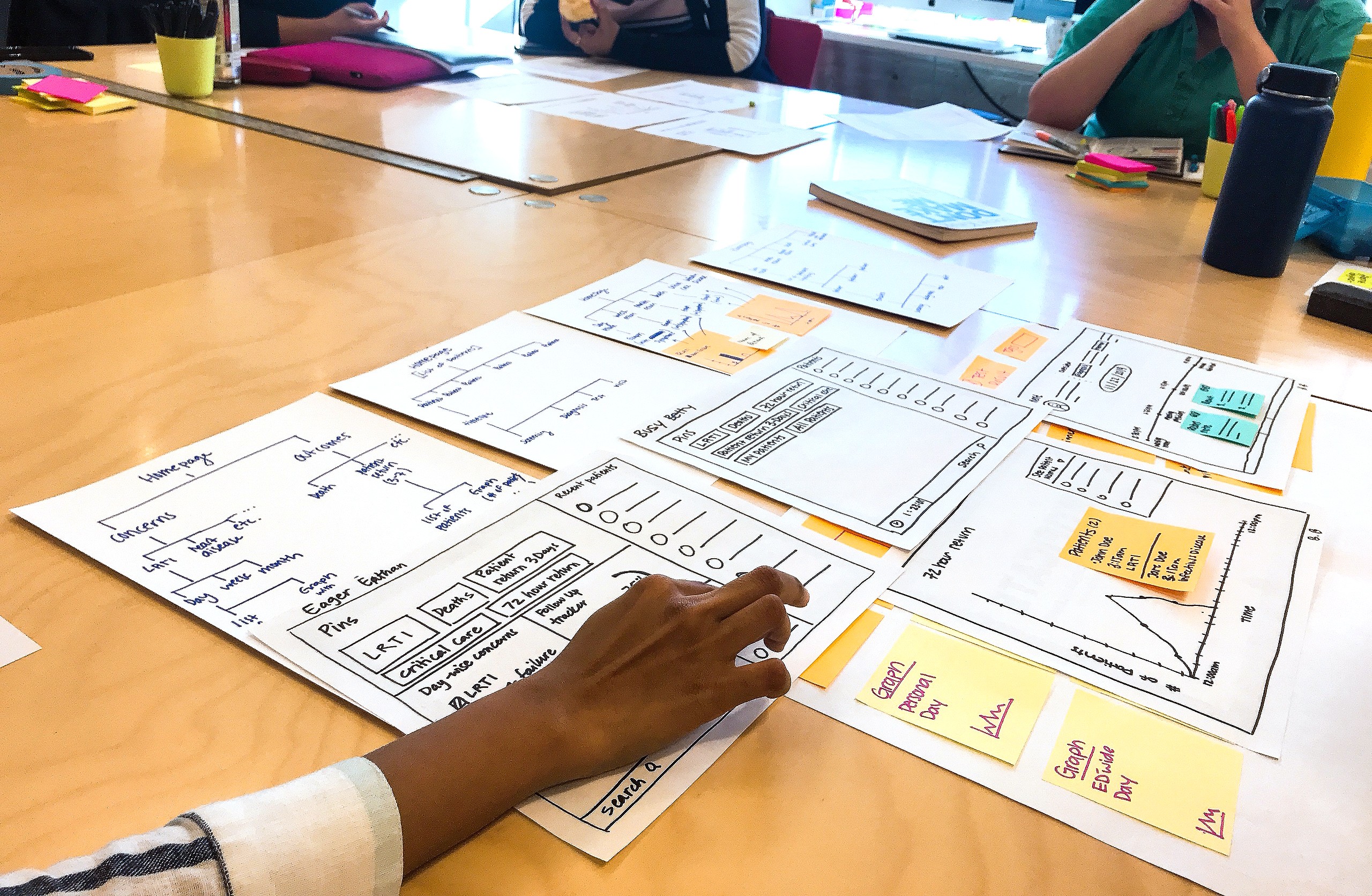Project Overview
Emergency medicine physicians play a major role in the healthcare system for acutely injured and critically ill patients, sustaining America’s healthcare safety net for our most vulnerable populations. Yet emergency care is episodic; physicians have no knowledge of their patients before their visit and follow-up can be difficult. When interviewed, most physicians had little knowledge of their patient outcomes and no knowledge of trends in outcomes. The impact of COVID-19 has only heightened these dynamics.
In order to understand what intervention might be best suited for ED physicians, an interdisciplinary team of students and staff at the Center for Social Design at Maryland Institute College of Art (MICA) kicked off a multi-year collaboration with Johns Hopkins School of Medicine, Center for Data Science in Emergency Medicine (CDEM). The project, supported by the Agency for Healthcare Research and Quality (AHRQ), focused on how to reduce the health and financial harm caused by the current disconnect between emergency department clinicians and their patients.
Utilizing a human-centered, collaborative and design-driven approach, the team at MICA worked with CDEM to identify ways to close the feedback loop in emergency medicine and share information about patient outcomes back to physicians. The research and brainstorming resulted in LOOP, Linking Outcomes of Patients, a dashboard that shows patient outcomes in real-time in order to improve emergency care and encourage longitudinal learning.
Process
Research:
The MICA team reviewed existing literature on barriers to patient care in Emergency Departments (ED) and facilitated semi-structured interviews of ED physicians to better understand current methods for tracking patient outcomes. The team also distributed a survey to physicians to identify what patient outcome information would be most valuable.
Synthesis:
The team identified common themes and insights from the research and crafted a set of design principles and personas to guide design decisions moving forward.
Design Principles:
- Value the Physician’s Practice: Understand that physicians are making the best choices they can given the circumstances. Be mindful of the demands on physicians and design to support their work.
- Capture Curiosity; Encourage Action: Use encounter feedback as a way to share and generate knowledge. Build on this knowledge to inspire action in practice and care behaviors.
- Prioritize Clear & Simple Delivery: Generate designs that are intuitive, relevant, and easily accessible.
- Be Agile to Need: Have the design be customizable for providers’ unique needs and embrace iterations throughout the process.
Personas:
- Digital Danny, a tech-savvy doctor who thrives when everything is digitized.
- Busy Betty, an always-on-the-go doctor who only has time for quick and simple fixes.
- Analog Andy, an experienced doctor who is wary of new technology.
- Accepting Ava, an easy-going doctor who is willing to adjust to new protocols and rules.
- Eager Ethan, a creative and passionate doctor who is open to change.
- Decisive Derek, a detail-oriented doctor who relies on stats and figures.
Ideation
The team facilitated a two-hour brainstorming session with physicians, computer scientists, and CDEM staff. The ideas generated served as the starting point for prototype creation.

Prototyping:
Next, the ream crafted low-fidelity mockups of the ideas to test. Throughout the prototyping process, CDEM staff gave feedback on the feasibility and direction of the work. After many rounds of revisions, the team decided to focus on the top concept — a patient outcome dashboard.

Implement + Iterate:
Working closely with data scientists and physicians, the lead designer created digital mock-ups of the dashboard using Sketch and InVision. At this stage, MICA and CDEM continued to refine and test the dashboard with physicians in order to test the user experience and collect feedback on design elements and data visualizations. After 6 months of iteration, backend data cleaning, and a formal user testing session, CDEM and MICA launched a beta version of LOOP in March 2021.



Core Team
Cameron Morgan (MASD '19), Lee Davis, and Becky Slogeris
Practice-based Studio Team
Kadija Hart (MASD '20), Eesha Patne (MASD '20), Sasha Avrutina (MASD '20), Eunsoo Kim (MASD '20), Ayangbe Mannen (MASD '20), Harley French, Vidisha Agarwalla (MASD '20)
Project Partners
Scott Levin, Jeremiah Hinson, Eili Klein, Matthew Toerper, Aria Smith, Anthony DeAngelo, Arnaud Debraine, Chris El Khuri, Aly Strauss

